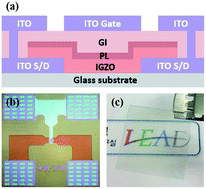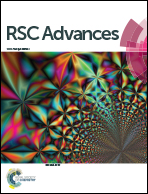Investigations on the bias temperature stabilities of oxide thin film transistors using In–Ga–Zn–O channels prepared by atomic layer deposition
Abstract
Bias temperature stress stabilities of thin-film transistors (TFTs) using In–Ga–Zn–O (IGZO) channels prepared by the atomic layer deposition process were investigated with varying channel thicknesses (10 and 6 nm). Even when the IGZO channel thickness was reduced to 6 nm, the device exhibited good characteristics with a high saturation mobility of 15.1 cm2 V−1 s−1 and low sub-threshold swing of 0.12 V dec−1. Excellent positive and negative bias stress stabilities were also obtained. When positive bias temperature stress (PBTS) stability was tested from 40 to 80 °C for 104 s, the threshold voltages (VTH) of the device using the 6 nm-thick IGZO channel shifted negatively, and the VTH shifts increased from −0.5 to −6.9 V with the increasing temperature. Time-dependent PBTS instabilities could be explained by a stretched-exponential equation, representing a charge-trapping mechanism.



 Please wait while we load your content...
Please wait while we load your content...